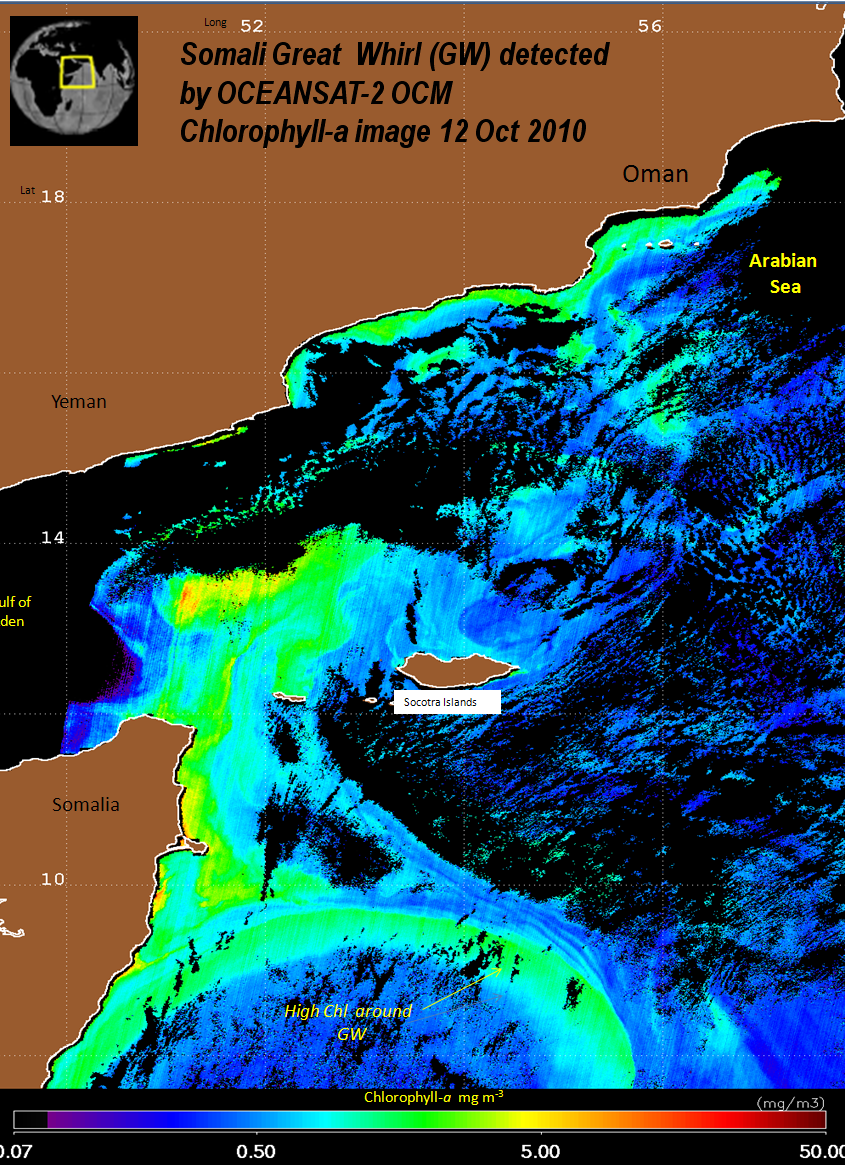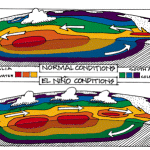AAAR! Today is Talk like a Pirate Day. So swill some grog and enjoy this beauty of a post on physical oceanography and piracy in the Arabian Sea.
This is a Disney pirate:

Note the large clunky ship and giant cannons.
These are real pirates:

Note the small maneuverable boat and handheld rocket launcher.
Unlike Captain Jack Sparrow up there, pirates are a very real thing that have been stopping oceanographers from exploring some parts of the ocean. In this case, it’s the Arabian Sea. These pirates roam the seas off the coast of Somalia in tiny boats with big rocket launchers (TWSS). But thankfully, oceanographers have decided to flip those pirates the science bird. A new paper takes a fresh look at shipboard and satellite data to better understand the oceanographic feature known as The Great Whirl.
The Arabian Sea is sort of a crazy place. Each year, winds from the annual monsoon blow so hard that it REVERSES THE ENTIRE CIRCULATION in the Arabian Sea. But not only that, around the same time a huge clockwise-rotating eddy forms off the coast of Somalia. First described in 1876 as a “great whirl of current”, this giant eddy became known as, surprisingly, The Great Whirl. At its peak, the Great Whirl is HUGE! In August the Whirl is almost 540 km across and occupies almost the entire Somali basin. As the currents rub against the island of Socotra and the African continent, the horizontal shear generates smaller counter-clockwise rotating eddies to the north and south. These eddy spawn sometimes break loose, gyrating and twirling around the edge of the Great Whirl like Travolta in Saturday Night Fever. And occasionally, just like the end of a disturbingly fruitful night of disco, these incestuous eddies merge again with the Great Whirl.
The Great Whirl is also a bit of an oddball in the world of anticyclonic eddies.** Anticyclonic eddies usually have warm cores, while the water in the center of the Great Whirl is cold. The authors suspect that cold, fresh water flows up the east African slope via the Somali current into the Great Whirl and through vertical mixing, cools the otherwise warm, salty water that is usually found in the Arabian Sea.
Like the monsoon, the Great Whirl is a seasonal feature. Initially, scientists thought the Great Whirl appeared around the same time as the monsoon. Therefore, they also thought that the Great Whirl formed in response to monsoon winds. But as it turns out, satellite data showed the Great Whirl appears almost a month before the monsoon winds! And the currents associated with the Great Whirl are so deep (almost 3 km or 2 miles!) that it’s also very unlikely they are caused by surface winds.
If it’s not winds that’s causing the Great Whirl, then what is it? It’s most likely WAVES me hearties! Specifically, it’s type of horizontal wave called a Rossby Wave. Rossby waves are planetary-scale found in both the ocean and the atmosphere. In the atmosphere, Rossby waves are responsible for causing meanders in the jet stream. In the Indian Ocean, they are responsible for providing the energy to spin-up the Great Whirl. In this case, the culprits are generated off the tip of India and propagate westward across the Indian Ocean until they reach the African coast. Their restoring force (the force that makes the crests and troughs of waves wiggle up and down) is the change of the coriolis force with latitude**. Rossby waves are so large that their undulations weren’t seen until satellites were able to take large-scale snapshots of the earth! While the observations can’t completely confirm that Rossby waves are the catalyst for the annual generation of the Great Whirl, these waves cause vorticity to increase right before the whirl starts whirling, making it pretty likely that they supply the energy needed to kickstart this giant current eddy.
While pirates in fictional maelstroms may lead to epic showdowns, in the real world pirates in Great Whirl just deprives us of oceanic knowledge. By matching historical and satellite data sets, Beal and Donohue have been able to fill in some of these gaps, ultimately telling those mangey chumbuckets tha’ turn ’round and head your barnacled bottoms back to thar’ dry lands, cause by hook or by crook, me science will be done!
* Before the physicists get their panties in a bunch and tell me that the coriolis force isn’t a real force, it’s true, it isn’t a real force. But in a rotating frame of reference, the coriolis effect acts like a force and can be applied as a force mathematically to describe geophysical fluid motion. So I’ll continue to call it the coriolis force because for all of us spinning on this earth together, the coriolis effect acts like a force.
**In the Northern hemisphere, counter-clockwise rotating fluids are said to have cyclonic circulation while clockwise-rotating flow is anti-cyclonic. The reverse is true in the Southern Hemisphere.
REFERENCES:
Beal, L. M., and K. A. Donohue (2013), The Great Whirl: Observations of its seasonal development and interannual variability, J. Geophys. Res. Oceans, 118, 1–13, doi:10.1029/2012JC008198.







have to look